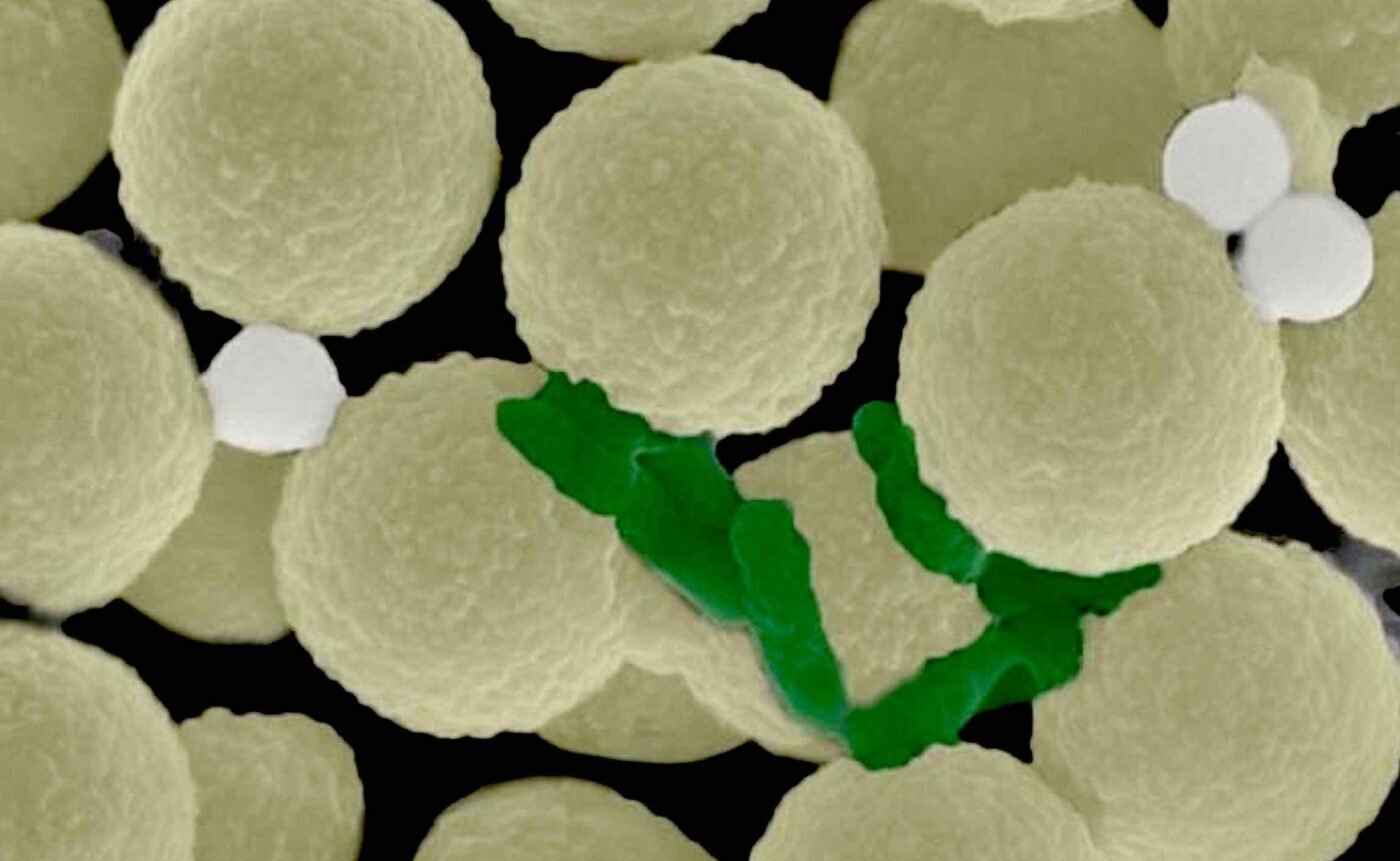
Posted on 05/08/2024 12:33:35 PM PDT by Red Badger

Above: The tiny, spherical robots (shown in light yellow) collect bacteria (green) and small pieces of plastic (gray) from within water while under the influence of a rotating magnetic field (Pumera, et al/ACS Nano 2024).
~~~~~~~~~~~~~~~~~~~~~~~~~~~~~~~~~~~~~~~~~~~~~~~~~~~~~~~~~~~~~~~~~~~~~~~~~~~~~
Scientists report the development of microbiotic swarms that capture microplastics and potentially harmful microbes in water, paving the way for new approaches to combatting pollution in our oceans and waterways.
According to new research led by Martin Pumera and colleagues, a microscale robotic system has been developed that can attract and then remove microplastics and harmful bacteria from water. These tiny plastic particles, often smaller than five millimeters, can serve as transportation mediums for harmful bacteria that allow various waterborne pathogens to potentially make their way into food products.
By mimicking behaviors found in nature, such as natural swarms that include schools of fish, the new microscale robot swarms could potentially offer a revolutionary way to cleanse water and prevent the spread of pathogenic bacteria. The team’s work was recently the subject of a paper published in the journal ACS Nano.
Everything from old toys to containers, food packaging, and other discarded plastic items can break down into tiny bits that are often very difficult to filter out of water. This potentially enables these microplastics to impact marine animals and ultimately make their way into our food supply, thereby presenting challenges for human health since they are also known attractants of pathogenic bacteria.
In their recent research, Pumera and his team created a novel variety of microrobots by attaching polymer strands with positive charges capable of attracting both microplastics and bacteria to magnetic microparticles. Each just 2.8 micrometers in diameter, these microparticles engage in swarming behavior when under the influence of a rotating magnetic field, resulting in motion through water that the team found to be highly efficient in the collection of particulates and microbes.
During experiments, the research team simulated conditions that would normally occur in natural settings by introducing fluorescent polystyrene beads to serve as microplastics, along with Pseudomonas aeruginosa bacteria, all within the same water tank.
“When exposed to an externally applied rotating magnetic field, these magnetic beads dynamically assemble into rotating micro-robotic planes exhibiting swarming behavior,” Pumera and his colleagues write in their new paper. Under the magnetic field’s influence, the microrobots successfully demonstrated an ability to reduce the number of beads and bacteria, capturing as much as 80% of the Pseudomonas aeruginosa present within the water at the highest robot concentration.
The microrobots were also controllable to a degree through adjustments to the number of robots as they self-organized into flat clusters during movement through the water.
Once the contaminants were collected, the team retrieved the microrobots using a permanent magnet, after which they were cleaned using an ultrasound process and disinfected by exposing the bacteria they collected to ultraviolet radiation. Although the reusable robots showed slight decreases in efficiency after each use, they nonetheless demonstrated an effective method for the purification of water through the overall reduction of microplastics and bacteria.
The team’s new approach holds promise for future environmental cleanup efforts since these scalable micro-robotic devices are also reusable and could potentially help to significantly reduce the presence of microplastics and bacteria in water systems around the world.
The team hopes that by improving the new process further, it can improve the efficiency and practical use of such technologies, altogether helping to “stimulate the development of hybrid organic/inorganic systems capable of capturing multiple water contaminants simultaneously.”
The team’s paper, “Magnetic Microrobot Swarms with Polymeric Hands Catching Bacteria and Microplastics in Water,” appeared in ACS Nano on May 8, 2024.
Reminds me of a vaccine that was created with nanoparticles that would hunt down and kill the coronavirus. How’d that turn out again?
What could go wrong?
Microplastics are now ubiquitous horrible disease inducing pollutants.
Just what I was thinking.
Disclaimer: Opinions posted on Free Republic are those of the individual posters and do not necessarily represent the opinion of Free Republic or its management. All materials posted herein are protected by copyright law and the exemption for fair use of copyrighted works.